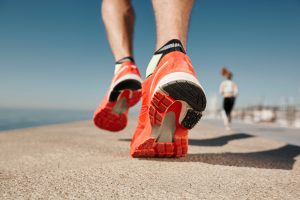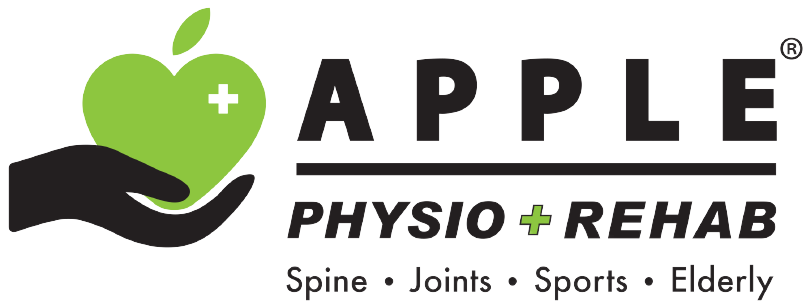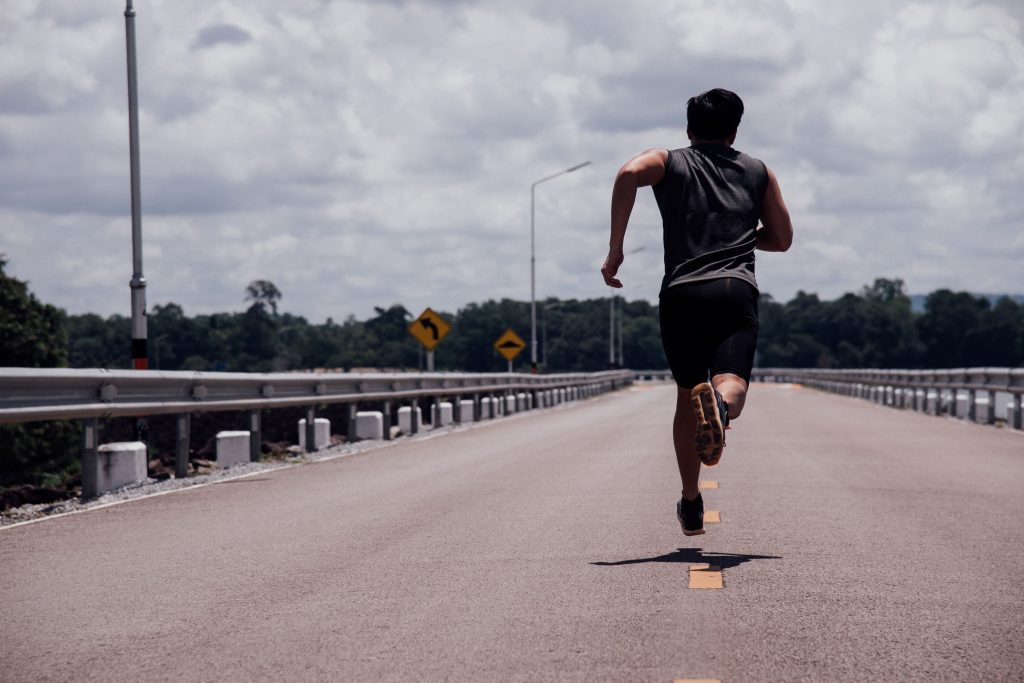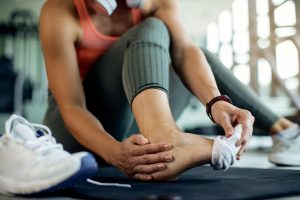With the rising popularity of marathons and fitness runs, triathlons have also made it on everyone’s map. The sport combines the best of not both, but three worlds—blending the unique challenges of swimming, cycling, and running!
To conquer this iron-clad challenge, you need a body as tough as nails. Whether you’re a seasoned athlete or a first-time participant, a strong, resilient body is your secret weapon. So, ditch the excuses and get ready to transform yourself into a triathlon powerhouse.
The Importance of Fitness and Strength in Triathlon Training
A triathlon is a gruelling test of endurance, strength, and mental toughness.
While cardiovascular fitness is often the primary focus due to the insane distances you have to cover, neglecting training on other aspects can hinder your performance. A strong physique not only gives your legs more push in every step, but your body will also work more efficiently and fatigue slower.
That’s why you need a comprehensive approach to training for a triathlon—combining endurance, strength, flexibility, and proper nutrition. A balanced regimen will translate to better athletic performance and minimise your risk of injury.
So here are some tips from your friendly neighbourhood physiotherapy and rehabilitation centre in Malaysia for building a strong and flexible body that can handle a triathlon’s swimming start to the final run.
How Do I Stay Fit for Triathlon Training?
-
Strength Training: Build a Solid Foundation
Have you ever watched elite runners and noticed that their arms do more than just swing back and forth? This is because they move using their entire bodies. Their arm movements and running pace are in sync perfectly to run as fast and efficiently as possible.
And you can achieve the same via strength training! Now, you might be thinking of bodybuilders pumping iron for maximum gains, but there’s much more to it than that. For triathletes, specific strength training workouts can target key muscle groups used in each discipline:
- Swimming – Pull-ups and lat pulldowns improve your upper body strength.
- Cycling – Leg presses and hamstring curls boost lower body power.
- Running – Lunges and calf raises to strengthen your legs.
For more comprehensive results, consider adding compound exercises like deadlifts and overhead presses into your routine. These movements engage multiple muscle groups simultaneously, improving your overall strength and power. Also, you can never go wrong with core exercises like planks, mountain climbers, and leg raises to improve stability and prevent injuries while you’re on the track.
Try to do at least two to three sessions of strength training every week. Focus on compound movements and throw in some free weights to build functional strength.
-
Fueling Your Body Right: The Engine that Drives You
Peak performance hinges on proper nutrition. How do you expect your body to move the way you want if it lacks the fuel and nutrients it needs to function optimally?
Nutrition provides the energy necessary for intense workouts and aids in recovery. So you should consume a balanced diet rich in carbohydrates, proteins, and healthy fats.
Carbohydrates like whole grains, sweet potatoes, and quinoa are your primary fuel source for sustained energy release. Lean protein sources such as chicken, fish, tofu, and legumes support muscle synthesis and recovery. Studies show that athletes should consume 1.2–2.0 grams of protein per kilogram of body weight daily depending on their training intensity.
Healthy fats from avocados, nuts, and olive oil aid hormone production and overall health. Fruits and vegetables provide essential vitamins, minerals, and antioxidants that boost your immune system and reduce inflammation.
You can also incorporate nutrition strategies into your pre- and post-workouts. Eating a carbohydrate-rich meal or snack before training gives you needed fuel, while a combination of carbs and protein after a workout does wonders for recovery.
Staying hydrated is equally important. Dehydration can significantly mess with your performance. Try to drink at least 3 litres or 8 cups of water throughout the day, and drink more when you train. Sports drinks can replenish electrolytes and minerals lost through sweat.
-
Endurance and Cardiovascular Training: The Heart of the Matter
Endurance training is the foundation of triathlon success. It improves your aerobic capacity and cardiovascular health. This goes a long way in helping you sustain prolonged physical activity.
Since you’re preparing for a triathlon, swim-bike-run trifecta should form the backbone of your training programme. Incorporate long, steady-state cardio sessions into your weekly routine, such as a 60-90 minute ride on your bicycle or a 10-15 kilometre run.
You can change things up from time to time as well. For example, doing hill repeats on your bike can boost leg strength and power. Try open-water swimming to challenge different muscle groups compared to pool swimming. These sessions help build the endurance necessary for the triathlon’s multi-sport format.
Studies show that High-Intensity Interval Training (HIIT) is also effective in improving cardiovascular fitness and VO2 max, which measures your body’s ability to utilise oxygen during intense exercise. While on your daily run, consider alternating between 1-minute sprints and 2-minute jogs for 20–30 minutes to work both endurance and speed.
-
Flexibility and Mobility: Staying Flexy and Moving Freely
Flexibility and mobility are often overlooked. But know that these abilities are crucial for preventing injuries and improving performance.
These exercises help maintain muscle elasticity and joint health, which are essential for the varied movements required in swimming, cycling, and running. They also improve your range of motion and reduce muscle tension. Yoga and Pilates are excellent options for enhancing flexibility, balance, and core strength.
On regular workout days, try doing dynamic stretches such as leg swings, arm circles, and torso twists to warm up your muscles beforehand. After workouts, static stretches like holding hamstring stretches or quad stretches help reduce muscle stiffness and aid in recovery. Incorporate some mobility drills such as hip flexor stretches and ankle mobility exercises to enhance overall movement efficiency.
If you’re short on time or just want to do some quick stretches, here’s a short guide to target specific muscle groups used in triathlons:
- Shoulder stretches for swimmers.
- Hamstring stretches for cyclists.
- Calf stretches for runners.
-
Recovery and Rest: Recharge and Rebuild
Recovery is yet another aspect of training that is neglected, yet it is critical for muscle repair and growth.
Your body needs time to repair itself after intense workouts. You make microscopic tears in your muscles when you work them. With sufficient rest, they rebuild and become stronger. Overtraining will lead to major muscle tears, burnouts, and injuries, which will take even longer to heal and get your mojo back.
So how should you rest? Sleep.
Yes, sleeping is one of the most natural ways to heal, and we do it every day. Most of us just don’t do enough of it. You’ll be surprised to learn that a large portion of the human population lacks sleep.
Adequate rest allows your body to heal from the strains of training and prevents overtraining syndrome. Aim for 7–9 hours of uninterrupted sleep every night and commit to at least one full rest day per week in your training schedule to support muscle repair and cognitive function.
Active recovery activities, such as light swimming or a leisurely bike ride, can be done to promote blood circulation and reduce muscle soreness without putting additional strain on your body. Try practising relaxation techniques like meditation or deep breathing to manage stress and promote overall well-being.
Getting professional massages and sports physiotherapy in Malaysia can further enhance your recovery process. They help alleviate muscle tension, improve circulation, and address any muscular imbalances or injuries. According to the research, regular sports massages can significantly reduce delayed onset muscle soreness (DOMS) and improve overall recovery times. At Apple Physio+Rehab Centre, we offer specialised knee pain treatment in Malaysia for athletes everywhere, helping you recover faster and stay injury-free.
Time to Put Your Triathlon Training Blueprint into Action

To excel in triathlon training, a holistic approach to fitness and strength is key.
Incorporating strength training, proper nutrition, endurance exercises, flexibility routines, and enough rest can help you prepare for the unique challenges of a triathlon. Sure, you want to maximise performance and minimise injuries, but you also want a healthy, sustainable and most importantly, enjoyable training experience.
Remember, consistency is key. Small, incremental improvements over time lead to significant gains.
Stay tuned to our blog page for more tips on all things fitness. Our expert team offers the best physiotherapy services in Kuala Lumpur to support your training and recovery needs. Contact us today to learn more about how we can assist you in your fitness journey!




